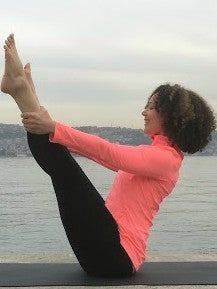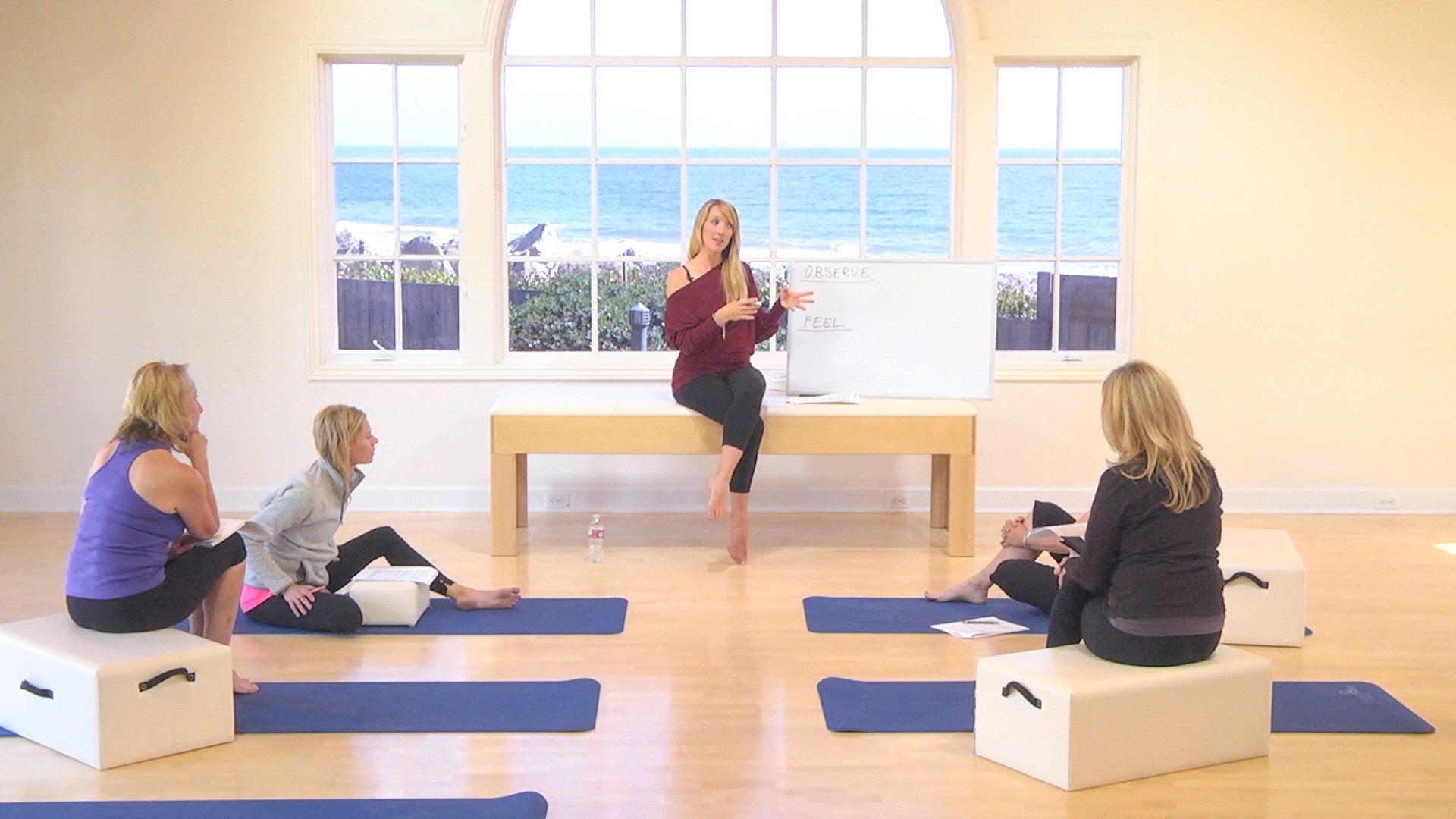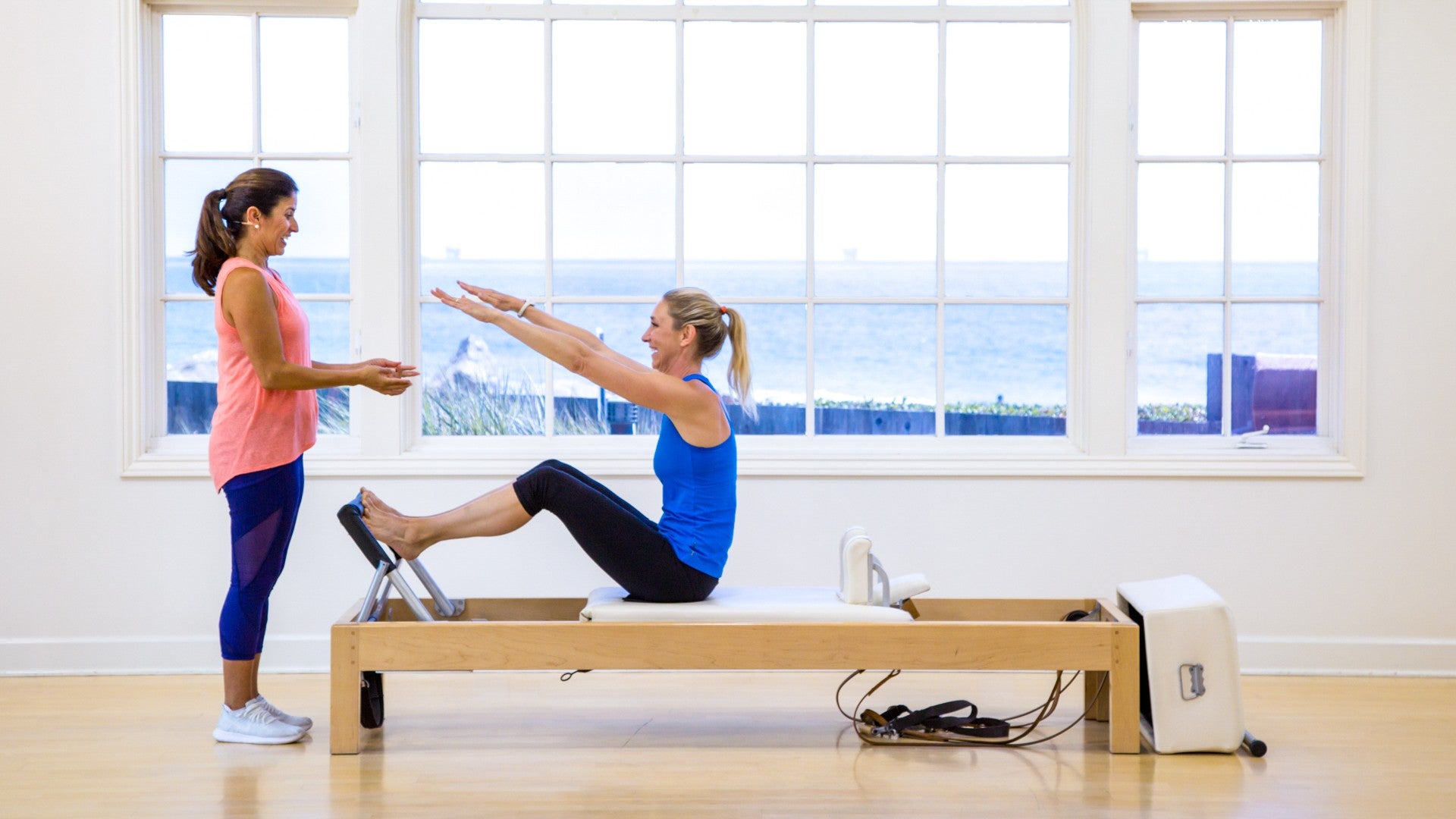
Switching from Hands-On to Verbal Cues
As the majority of the Pilates community has shifted from in-person to virtual teaching, the question of maintaining the quality and integrity of instruction has arisen. How does one transition from using hands-on cues to only verbal ones? Can virtual classes truly be effective and as good as in-person classes? In a word, yes, though different, virtual classes do present an opportunity for deeper learning -- for both the teacher and the student.
To help shed light on this topic, Pilates Anytime teachers Maria Earle, Marimba Gold-Watts, Georgia Burns, Michael King, and Lesley Logan have graciously provided some insight.
There are three common ways in which people learn - visually, verbally, and kinesthetically. Generally, we’re a mix of all three, and some favor one over the others. Many teachers use ‘hands-on’ cues; meaning they use touch as a way for clients to engage, feel, or connect with specific muscles. It also encourages release or a reminder not to tense a certain area of the body or to bring them into their ideal alignment. A few examples of hands-on cues can include gentle touch, a hold, providing traction, or giving a stretch. It is the teacher’s discernment as to when to use a hands-on cue but it's always to the benefit of the client for their ideal execution of an exercise. The same holds true for a verbal cue except there is no touch involved, the client listens and strives to apply the information to their body.
Due to the shift from in-person to virtual classes, the use of hands-on cueing is no longer an option. Relying only on verbal cueing has proven to be quite challenging for some teachers. Relying solely on demonstrating with a full schedule will result in fatigue, burnout, and overuse or repetitive injuries so it is important to shift to using your words if you were used to giving tactile feedback.
How do I transition from hands-on to verbal cues?
In the studio, a teacher can easily place a hand on their students' scapula to encourage stability, touch the crown of their head to inspire a lengthened spine, or physically adjust a position. Virtually, the teacher primarily has only the use of their words to convey direction and ideas.
Working online comes with the challenge of internet glitches such as distance, cutting out, and delayed communication. The general consensus from our experienced teachers is to slow down, be deliberate, and speak clearly. Keep verbal cues simple, being as direct and effective as you can.
Practice teaching, record yourself, then listen to the recording and try to do the class. This will provide a lot of insight and it can spark new ideas. Lesley Logan suggests writing down verbs that guide the desired outcome. At the beginning of her career, she would take those verbs, incorporate them into sentences, and later became a part of her teacher toolbox. Adaptation is a constant part of our growth and evolution as Pilates teachers and moving online is no different.
Are verbal cues more challenging online versus in-person?
Experienced teachers already comfortable with verbal cues find their words impactful regardless of the scenario. Teaching online presents the challenge of no longer having a 360-degree viewpoint of the student.
Both teachers and students have to realize and accept that teaching online is different from in-person. What at first may seem like a limitation is actually a new opportunity for deeper learning. Pilates Anytime teachers have shared that their students have gotten a lot out of listening, more so than from a regular in-person class. Marimba has found that clients are taking more ownership of their movement and sees this as a great opportunity to refine and diversify our teaching language.
As teachers, we may have a lot to say and feel the need to speak more online, however, less really is more. Remember to pause and allow the student to take the info in. It’s important not to bombard your students with too many verbal cues in place of touch or visual aids. The fine balance of speaking enough while keeping them moving comes with time, practice, and trust. Trust in the method, trust in your teaching ability, and trust in the students that chose you to teach them.
What are the best tips for verbal cueing online?
Teaching online, especially if it’s new territory or you don’t feel tech-savvy can make you nervous and speed up. Remember to slow down, keep your language simple and as direct and efficient as possible.
Be as descriptive as you can and experiment with using props as a substitute for hands-on. Georgia Burns suggests using blankets, the wall, or their own hands for that added sensation and awareness. Marimba shares “put your hand on the side of your rib cage and feel your ribs spread as you Sidebend" or instead of “breathe into my hands” use “breathe into the Theraband and try to expand into it with every inhale.” She reminds you to experiment with your language and all teachers agree that it always comes down to the student in front of you.
Maria suggests keeping the conversation open as to what they're feeling to make the experience about them.
In regards to the tone, volume, and pitch of your voice, these can be addressed at the beginning of class during set-up. Be careful not to ‘yell’ at your computer screens and stay mindful of your tone. Try to avoid sounding flat or monotone. Be natural. Marimba incorporates ‘word painting’, a concept in music. If you want your student to speed up the movement, using a faster, higher-pitched rhythm helps them understand your timing. A deep rhythmic tone encourages slower movement.
What do I do when verbal cues don't work?
There are a few things to consider when a verbal cue isn’t working. Maria suggests trying a few different cues then take a moment for co-teaching. Have them tap in and use their own words to describe how they’re feeling. Michael says that’s when you stop them, have them sit up and watch a demonstration. Lesley Logan reminds us that sometimes a student hears and understands the cue however they cannot yet make the change. It’s okay to practice and not get the cue today (of course within the realm of safety) - it’s about progress, not perfection!
How should I use imagery?
Some of our Pilates Anytime teachers are passionate about the use of imagery in verbal cues whereas others share the same passion but use it only for certain clients. As a teacher, you’ll have to discern when it's appropriate to use imagery. Some clients may resonate with task-based cues or a mixture. Weaving one visual image through a series of exercises can connect and maintain a flow as well as alleviate having to come up with a ton of images. All teachers agree; keep your language simple.
What are the additional things I should know?
We really are all in this together, everyone has been impacted and forced to adapt quickly to the ‘new normal’. Maria encourages us to take advantage of the worldwide access to teachers and classes and to connect to our community and to your tribe. Feed your soul and fill your teacher box.
Marimba says, “being hands-off doesn’t have to be a disadvantage.” Clients have the opportunity to own their practice. Georgia reminds you to pause and be gracious with yourself. Michael inspires us to stay positive and open to adapting.
Lesley asks that you focus less on what you can’t do or have and more on what you can and to always charge your worth!
We at Pilates Anytime love hearing from you! Please share how you’re switching from hands on to verbal cues in the comments below.
Comments


You need to be a subscriber to post a comment.
Please Log In or Create an Account to start your free trial.
















